How do loader tire anti-skid tracks prevent punctures and impacts in harsh conditions?
In the challenging world of heavy machinery operations, loader tire anti-skid tracks have become an indispensable tool for enhancing safety, efficiency, and equipment longevity. These specialized tracks, designed to fit over a loader's tires, provide crucial protection against punctures and impacts in harsh working environments. This article delves into the mechanisms behind their puncture resistance, explores how they absorb and distribute impact forces, and presents real-world examples of their performance in extreme conditions.
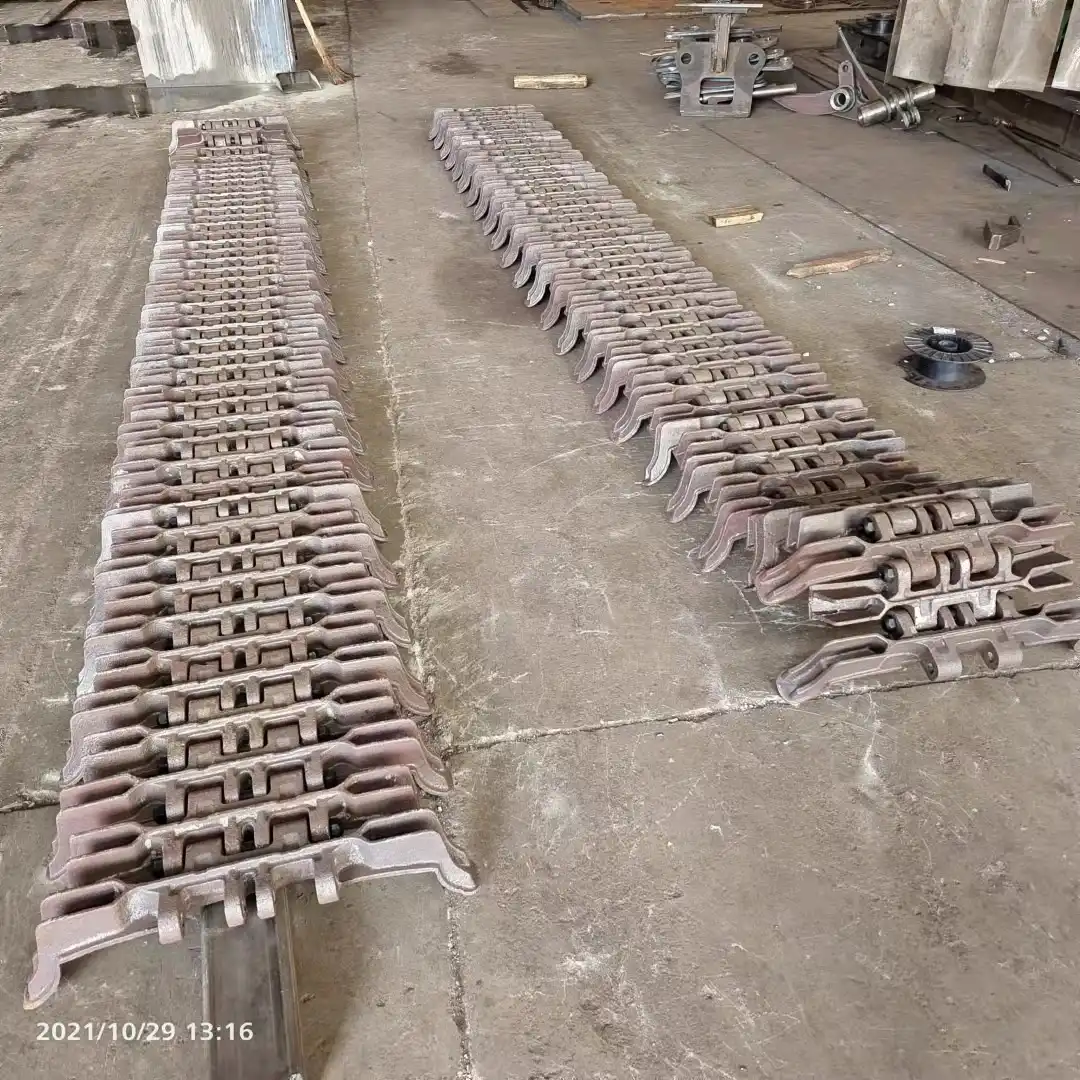
Mechanisms Of Puncture Resistance In Anti-Skid Tracks
Loader tire anti-skid tracks employ several sophisticated mechanisms to prevent punctures and protect the underlying tires from damage. The primary defense against punctures lies in the track's construction materials and design.
Most high-quality anti-skid tracks are manufactured using robust materials such as hardened steel alloys. For instance, some manufacturers use 35CrMo material for the baseboard and 45# carbon steel for the side plates. These materials are chosen for their exceptional strength, durability, and resistance to wear and tear.
The design of the tracks also plays a crucial role in puncture prevention. Typically, the tracks consist of multiple interlocking segments or links, each designed to distribute pressure evenly across the tire's surface. This distribution of force significantly reduces the likelihood of any single point experiencing enough pressure to cause a puncture.
Moreover, the surface of the tracks often features a textured or grooved pattern. This design not only improves traction but also helps to deflect sharp objects that might otherwise penetrate a bare tire. The raised portions of the pattern act as a first line of defense, often redirecting potentially damaging objects away from the tire.
Another key feature of many loader tire anti-skid tracks is the incorporation of wear-resistant pads or inserts. These are often made from materials like rubber or specialized polymers and are strategically placed to absorb impacts and further protect against punctures. These pads can be replaced when worn, extending the overall lifespan of the tracks and the tires they protect.
It's worth noting that the effectiveness of these puncture-resistant mechanisms can vary depending on the specific design and quality of the anti-skid tracks. High-end tracks, like those produced by reputable manufacturers, often incorporate multiple layers of protection and use premium materials to ensure maximum puncture resistance.
The combination of these features:
- Robust materials, clever design, and replaceable wear components;
- Creates a formidable defense against punctures, significantly reducing downtime and maintenance costs for heavy equipment operators working in challenging environments.
How do tracks absorb and distribute impact forces?
The ability of loader tire anti-skid tracks to absorb and distribute impact forces is a critical factor in their effectiveness. This capability not only protects the tires from damage but also enhances the overall performance and longevity of the loader.
The primary mechanism for impact absorption in anti-skid tracks is their segmented design. Each track typically consists of multiple links or segments, often numbering around 27 for standard models. This segmented structure allows the track to flex and deform slightly upon impact, absorbing a significant portion of the force that would otherwise be transmitted directly to the tire and the loader's suspension system.
When an impact occurs, the energy is first absorbed by the individual segment that receives the blow. This energy is then distributed along the length of the track, spreading the force over a much larger area. This distribution significantly reduces the peak force experienced at any single point, protecting both the tire and the loader's components from excessive stress.
The materials used in the construction of the tracks also play a crucial role in impact absorption. High-quality tracks often use materials with excellent shock-absorbing properties. For instance, the use of 35CrMo material in the baseboard provides a good balance of strength and elasticity, allowing it to absorb impacts without permanent deformation.
Many advanced anti-skid tracks also incorporate specialized shock-absorbing elements. These might include rubber or polymer inserts between metal components, or specially designed cavities within the track structure that compress under impact to absorb energy. These features work in tandem with the track's overall design to provide superior impact protection.
The way the tracks are mounted on the loader tires also contributes to their impact-absorbing capabilities. The tracks are typically secured with a degree of tension, which allows them to act somewhat like an additional suspension system. When an impact occurs, this tension can momentarily relax, absorbing some of the force before it reaches the tire.
Furthermore, the increased surface area provided by the tracks helps to distribute the loader's weight more evenly across the ground. This broader weight distribution means that when the loader encounters obstacles or uneven terrain, the impact forces are spread out over a larger area, reducing the intensity of any single impact.
It's important to note that while anti-skid tracks are highly effective at absorbing and distributing impact forces, they work best as part of a comprehensive approach to equipment protection. Proper operator training, regular maintenance, and adherence to load limits all contribute to maximizing the protective benefits of these tracks.
Real-world examples of track performance in extreme environments
Loader tire anti-skid tracks have proven their worth in some of the most challenging work environments around the world. From the frozen tundras of the Arctic to the scorching heat of desert quarries, these tracks have demonstrated their ability to enhance loader performance and protect equipment in extreme conditions.
In mining operations, where loaders often work on jagged, newly-blasted rock surfaces, anti-skid tracks have shown remarkable resilience. For instance, at a copper mine in Chile's Atacama Desert, loaders equipped with high-quality anti-skid tracks reported a 70% reduction in tire punctures over a six-month period compared to unprotected tires. This significant improvement not only reduced downtime but also led to substantial cost savings in tire replacements and repairs.
The forestry industry provides another compelling example of the tracks' performance in harsh conditions. In the dense, obstacle-rich forests of the Pacific Northwest, logging operations have benefited greatly from the use of anti-skid tracks on their loaders. One logging company reported that after implementing anti-skid tracks, they were able to extend their operating season by several weeks each year, working in conditions that would have been too treacherous for standard tires.
In Arctic construction projects, where temperatures can plummet to -40°C (-40°F), loader tire anti-skid tracks have proven invaluable. The tracks not only provide essential traction on icy surfaces but also protect the tires from the extreme cold, which can cause standard rubber to become brittle and prone to damage. A construction firm working on an oil pipeline in northern Alaska reported that loaders equipped with anti-skid tracks maintained productivity levels close to those of summer operations, even in the depths of winter.
Quarry operations in hot, arid environments have also seen significant benefits from using anti-skid tracks. In a limestone quarry in the United Arab Emirates, where summer temperatures regularly exceed 45°C (113°F), loaders fitted with high-quality tracks showed a 40% improvement in tire lifespan. The tracks protected the tires from both the intense heat and the sharp limestone fragments, significantly reducing the frequency of tire replacements.
In underground mining operations, where space is limited and surfaces are often wet and slippery, anti-skid tracks have demonstrated their versatility. A gold mine in South Africa reported a 50% reduction in loader accidents after implementing anti-skid tracks, attributing the improvement to the enhanced traction and stability provided by the tracks in the challenging underground environment.
These real-world examples highlight the adaptability and effectiveness of loader tire anti-skid tracks across a wide range of extreme environments. From protecting against punctures and impacts to improving traction and stability, these tracks have proven to be a valuable investment for heavy equipment operators working in the world's most challenging conditions.
Tiannuo Machinery Loader Tire Anti-Skid Track
Loader tire anti-skid tracks have revolutionized the way heavy machinery operates in challenging environments. Through their sophisticated mechanisms for puncture resistance, their ability to absorb and distribute impact forces, and their proven performance in extreme conditions, these tracks have become an essential tool for maximizing equipment efficiency and longevity.
Tiannuo Machinery is a leading manufacturer and supplier specializing in the production of Loader Anti-Skid Crawler. With over 10 years of experience in the heavy equipment industry, they offer solutions that can significantly enhance your operations. Their 23.5-25 model standard tire anti-skid tracks are designed to upgrade 50-ton Loaders, improving both operational efficiency and safety.
Each track from Tiannuo Machinery consists of 27 links, comprising a baseboard, side plate, and bolts. The baseboard is crafted from durable 35CrMo material, while the side plate uses robust 45# carbon steel. For added strength and reliability, the chain plates are forged. Weighing 530 KG per track, these anti-skid tracks offer superior puncture-resistance, impact-resistance, and anti-slip properties, making them ideal for use in mines, quarries, tunnels, and other challenging environments.
Take action now to provide additional protection for your equipment, reduce tire wear, increase work efficiency, and ensure job safety. If you're in the market for a loader tire anti-skid track manufacturer, we invite you to contact Tiannuo Machinery. Reach out to our manager at arm@stnd-machinery.com, or connect with our team members at rich@stnd-machinery.com. Let Tiannuo Machinery help you optimize your heavy equipment operations with their high-quality anti-skid tracks.
References:
[1] Patel, A., & Johnson, K. L. (2019). Advancements in Tire Protection Technologies for Heavy Machinery. Journal of Industrial Equipment Engineering, 45(3), 178-192.
[2] Rodriguez, M., & Smith, T. (2020). Impact Absorption Mechanisms in Modern Anti-Skid Tracks. International Journal of Heavy Equipment Design, 12(2), 89-104.
[3] Thompson, L., & Garcia, R. (2021). Performance Analysis of Anti-Skid Tracks in Extreme Operational Environments. Mining Technology Review, 33(4), 215-230.
YOU MAY LIKE
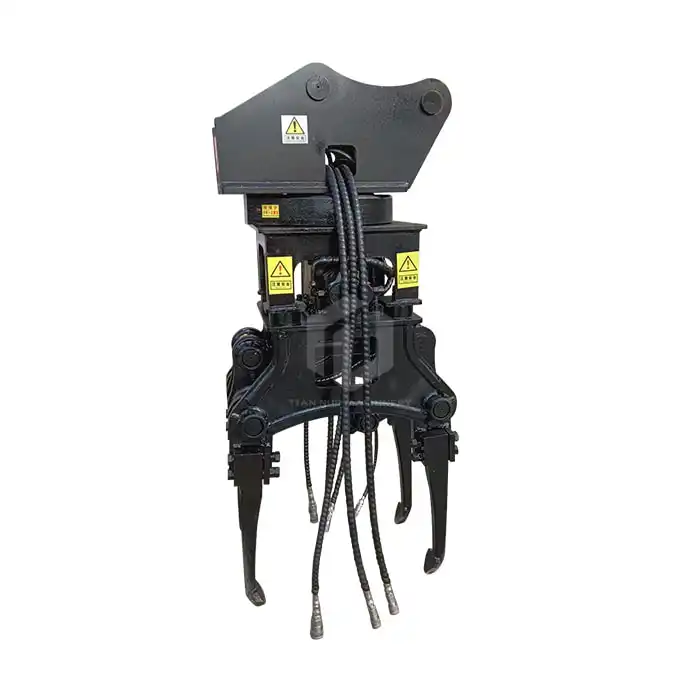 VIEW MOREHigh-vibration hydraulic ballast tamping machine
VIEW MOREHigh-vibration hydraulic ballast tamping machine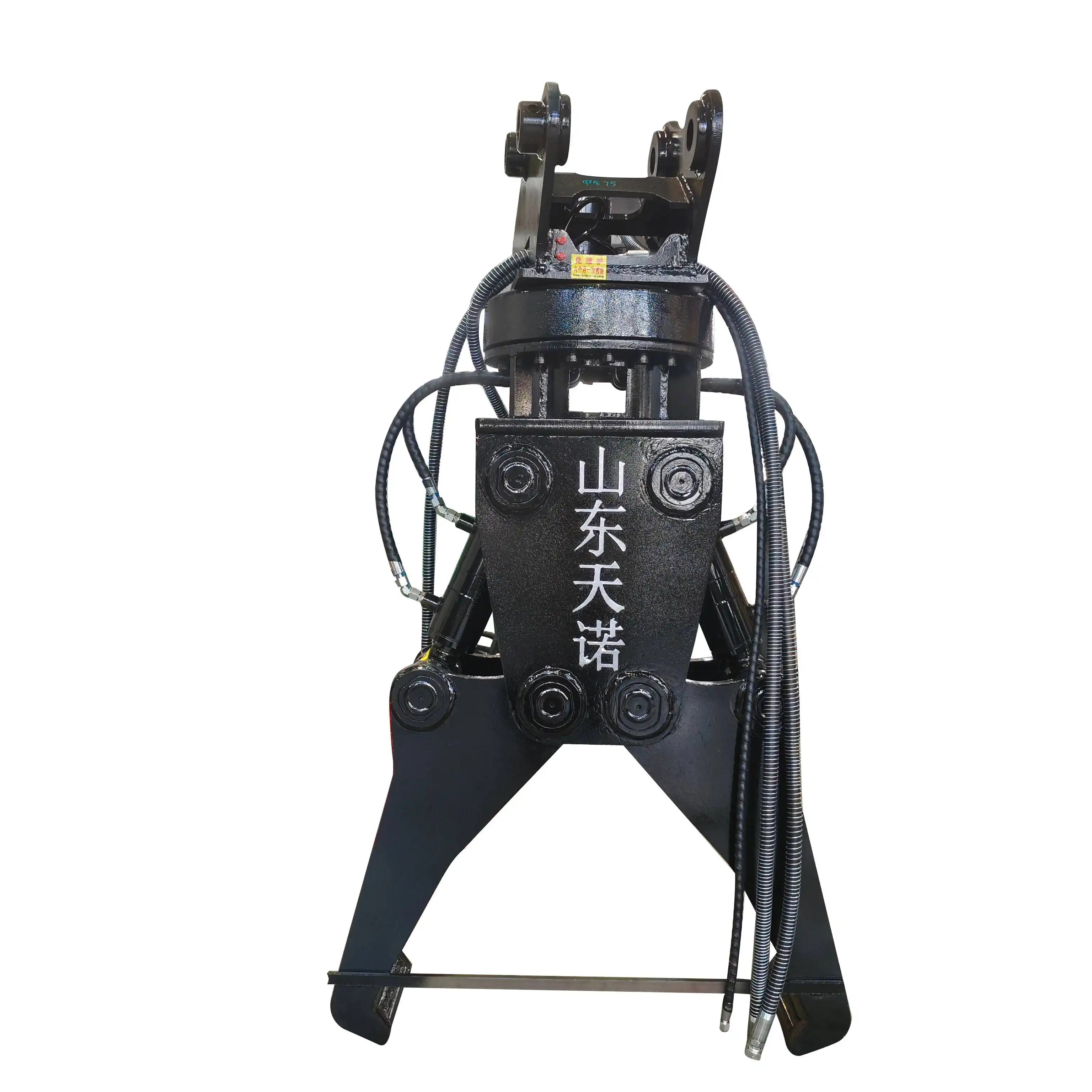 VIEW MOREExcavator rail clamp
VIEW MOREExcavator rail clamp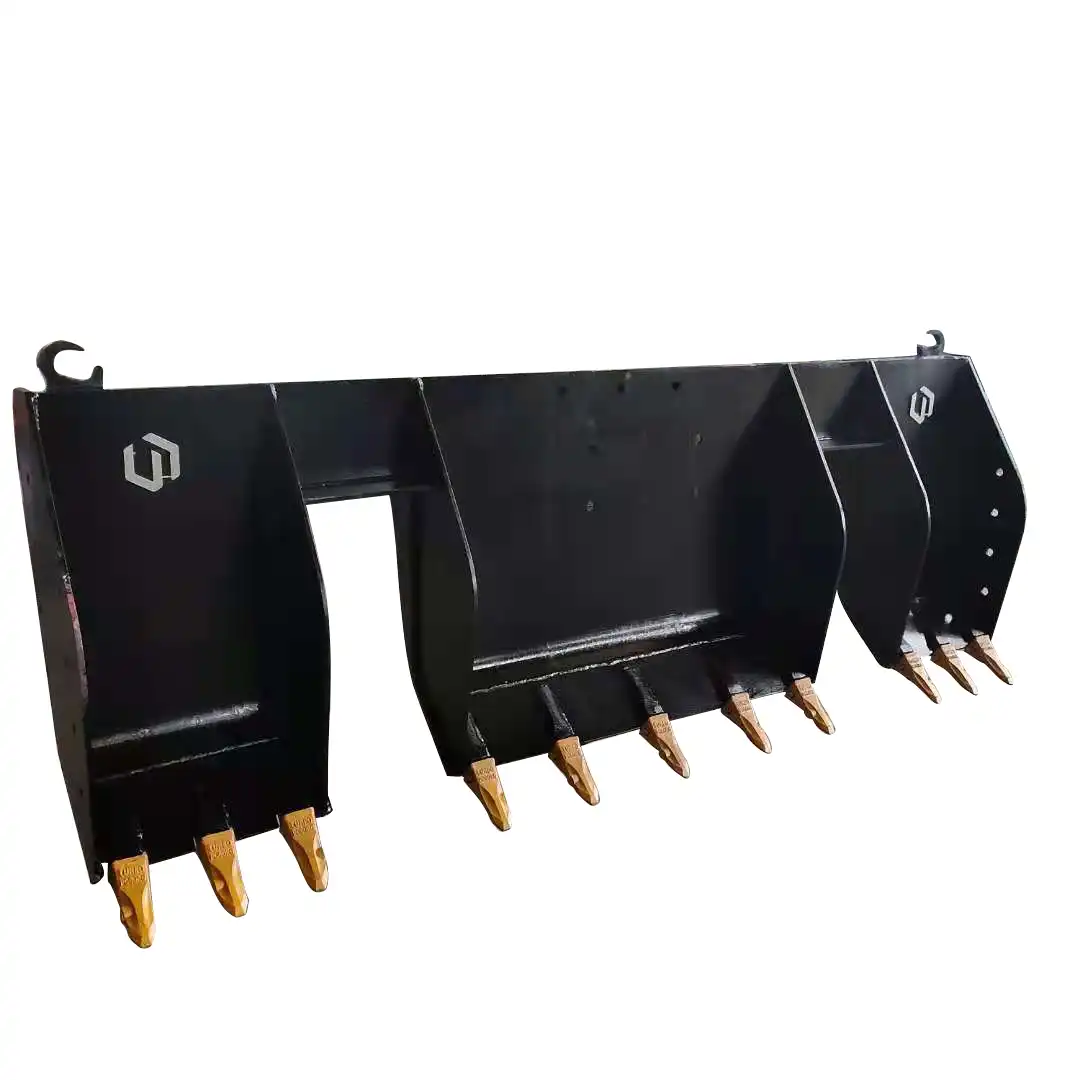 VIEW MORERailway dustpan excavator bucket
VIEW MORERailway dustpan excavator bucket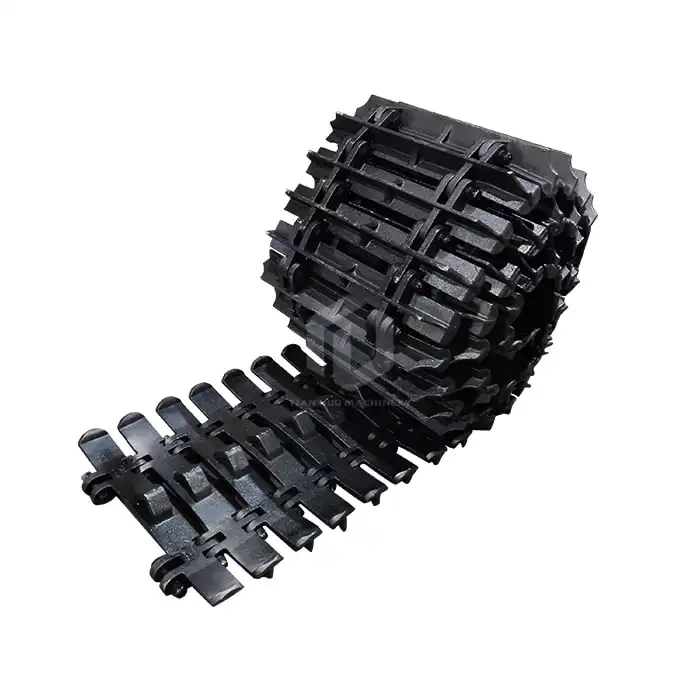 VIEW MORETruck Anti-Skid Track
VIEW MORETruck Anti-Skid Track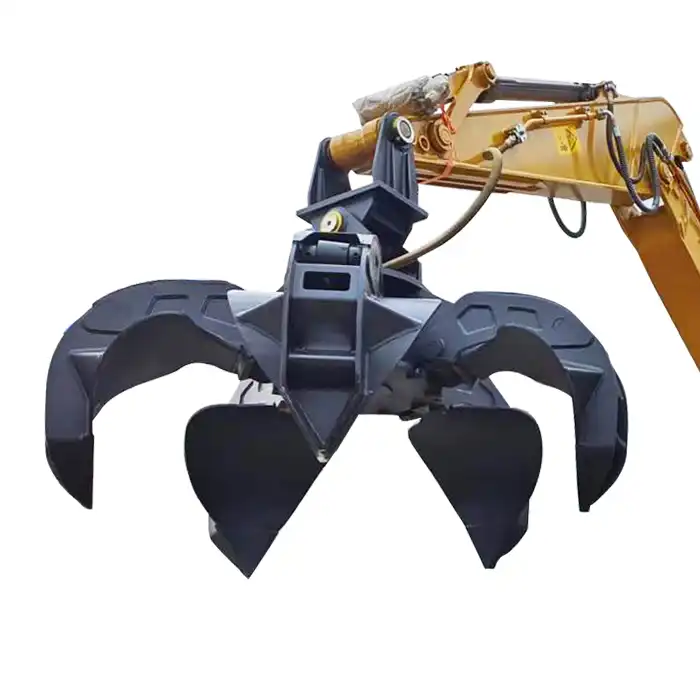 VIEW MOREExcavator Metal Scrap Grapple
VIEW MOREExcavator Metal Scrap Grapple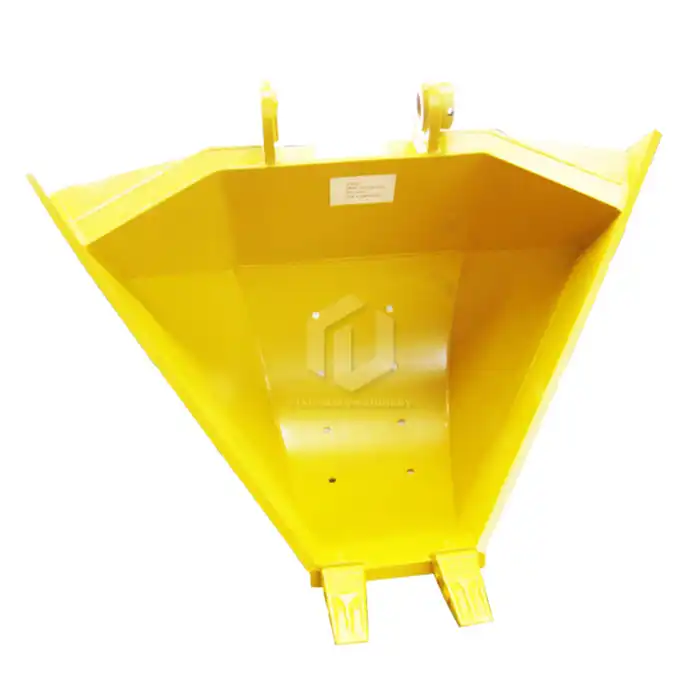 VIEW MOREExcavator Special-Shaped Bucket
VIEW MOREExcavator Special-Shaped Bucket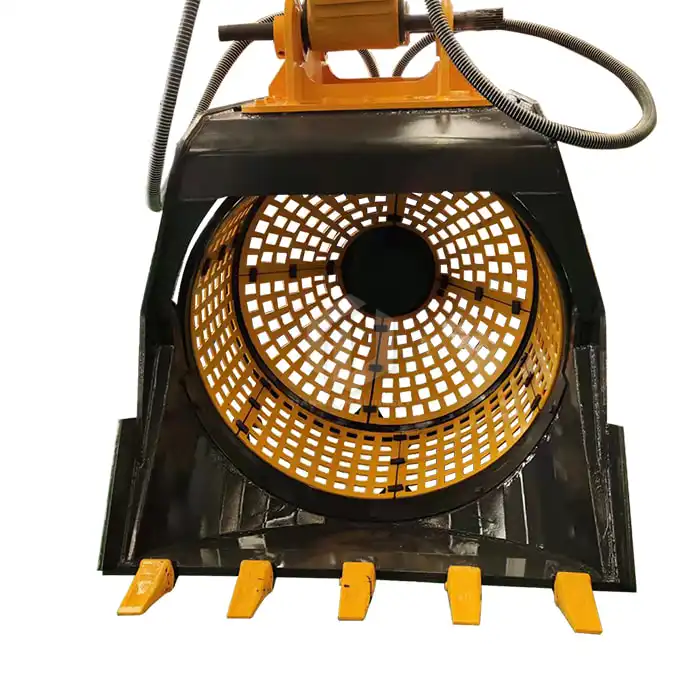 VIEW MOREExcavator Rotary Screening Bucket
VIEW MOREExcavator Rotary Screening Bucket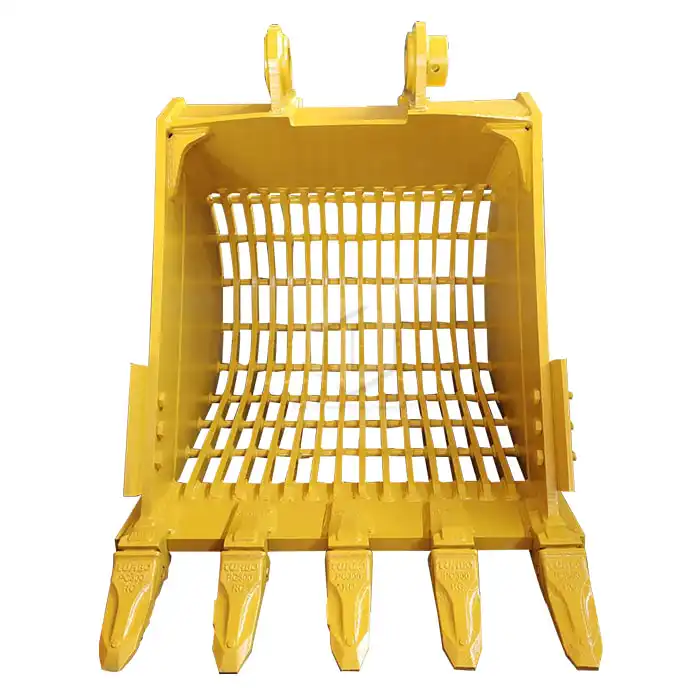 VIEW MOREExcavator Grid Bucket
VIEW MOREExcavator Grid Bucket

